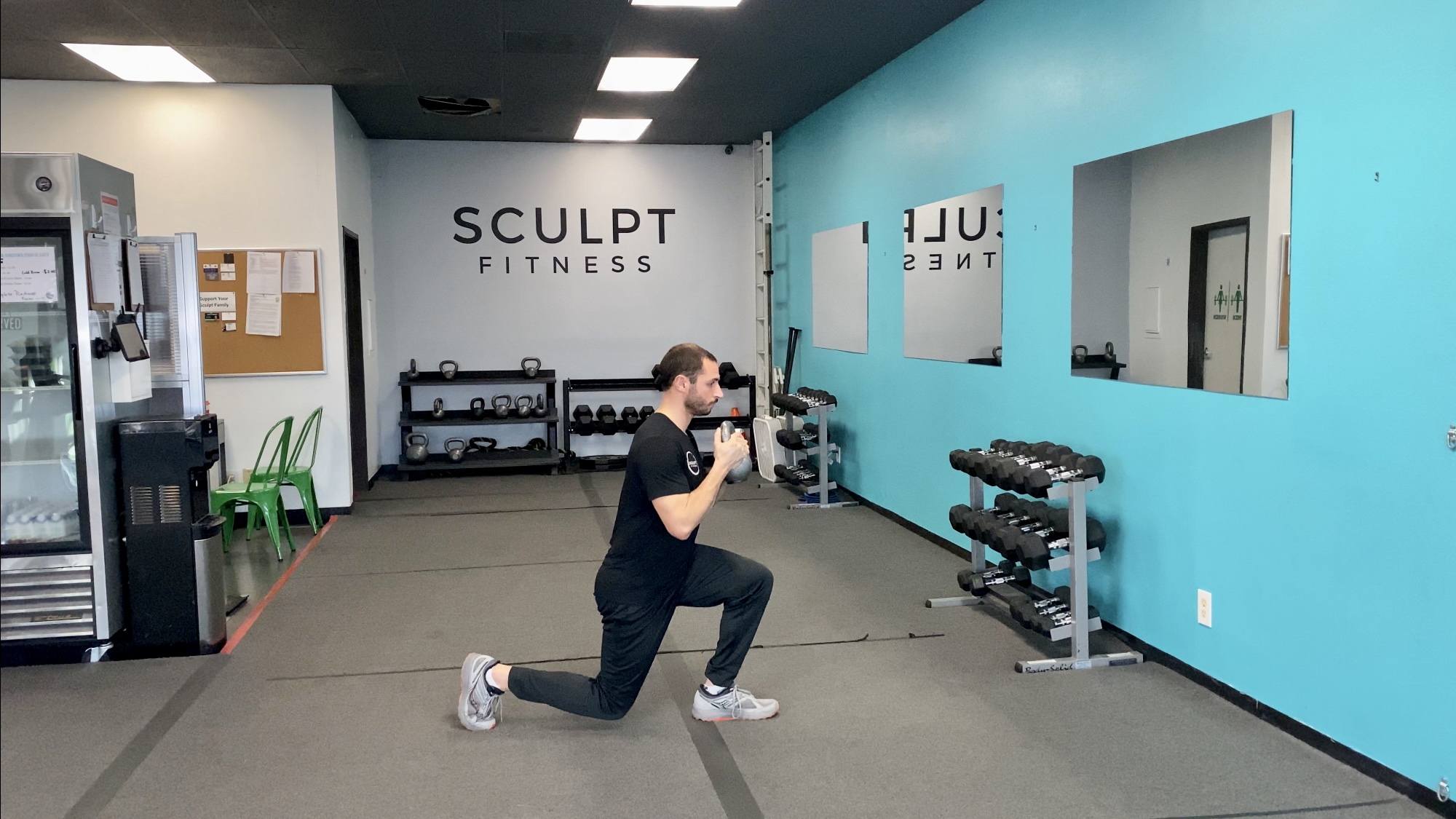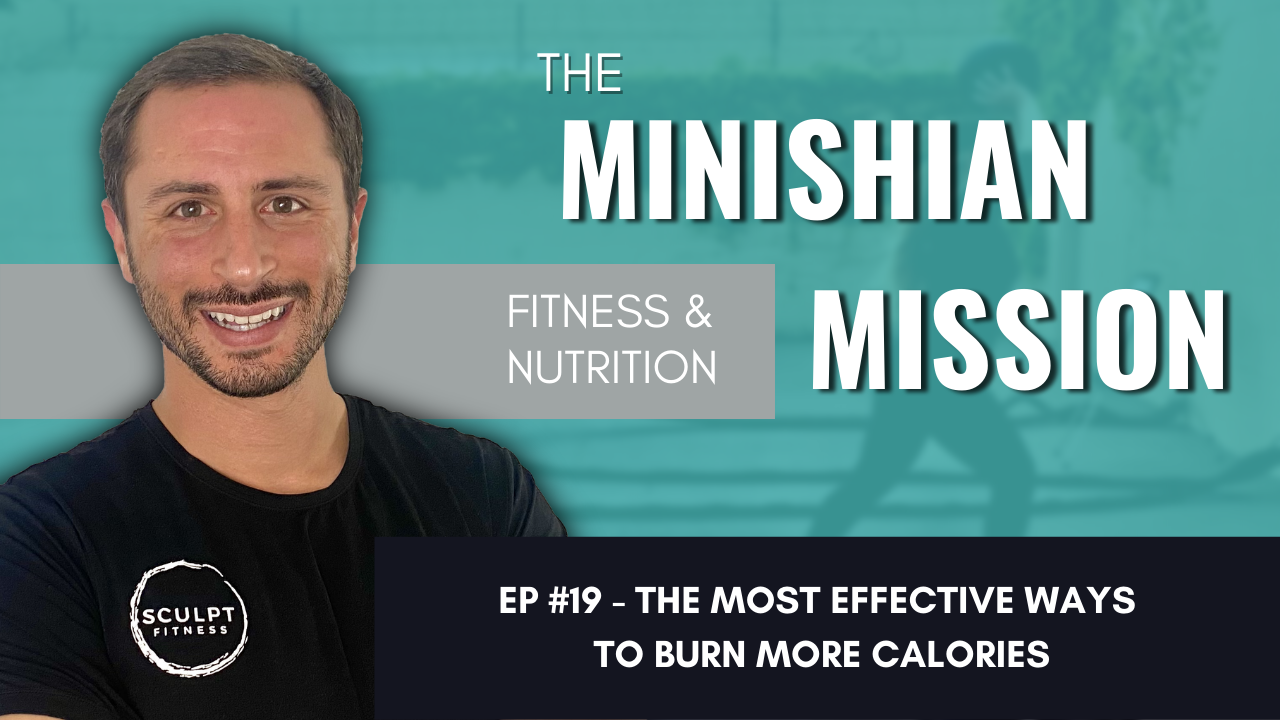
by David Minishian | Dec 13, 2022 | Exercise, Fitness, Strength Training
How to use three pieces of equipment for resistance training.
Starting a resistance based training routine can be simple and effective with minimal equipment. Whether you’re at home or in the gym, there are only a few pieces of equipment you need.
In a gym it can feel overwhelming with so many equipment options. You don’t need to use everything. The free weight section alone has all the equipment to implement a fantastic program from the extremely versatile dumbbells to more specific tools like kettlebells and barbells.
There is NO WRONG choice when it comes to equipment. The trick is to use the equipment that is going to benefit you most within your current workout plan and move you closer towards your goal.
Resistance Based Training Equipment
Dumbbells, kettlebells, and barbells can be used to complete each of the six fundamental exercises included in a training program. Let’s use the chest press exercise as an example to show when you might use each piece of equipment.
Dumbbells
When training dumbbells are foundational to have in a resistance based program. Dumbbells can be used to achieve muscular endurance, hypertrophy, or strength. In the chest press movement, dumbbells allow you to fully contract the chest muscles by bringing your arms and hands closer together at the top of the movement. Since dumbbells can be rotated in your hand, a neutral hand position can be used to reduce stress on the rotator cuff, possibly allowing someone with shoulder discomfort to complete the movement with little to no pain. Completing the chest press with dumbbells is also a safer choice when going heavier without a spotter as the weights can be dropped to your sides if you fail to complete a repetition. After you perfect your form with dumbbells, use other free weight equipment to challenge yourself in new ways.
Kettlebells
While kettlebells are used in the same ways as dumbbells, for specific movements like the chest press the weight is off-centered. This means controlling the kettlebell throughout the movement requires a higher level of muscular coordination. The stress place on the smaller stabilizing muscles will strengthen them, which will help improve chest press performance when using dumbbells or a barbell.
Barbell
When you want to maximize strength or power, the barbell is your best friend. The barbell allows you to lift more weight which helps improve overall strength. Since the bar requires a fixed hand position, you can also exert less controlled quick movements on the weight to build power. For the chest press the bar will require a spotter during heavier lifts. Safety comes first. Although the bar is specifically better for strength and power, it is excellent for hypertrophy, building muscle, too.
There is no wrong choice when it comes to which equipment you choose to grab. As long as the form is good, weight is challenging, you are progressing the program and having fun, the results you want are bound to follow.
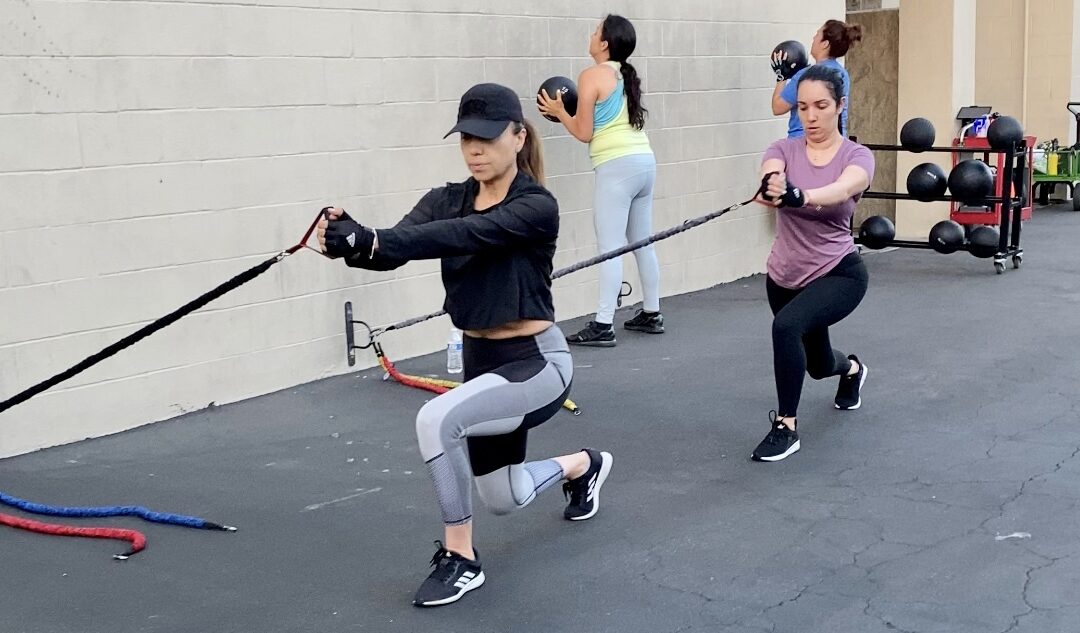
by David Minishian | Dec 7, 2022 | Fitness, Nutrition
Whether you want to lose fat, build muscle, or have more energy, there is a fool proof formula that will guide your way to success.
Follow it and you’ll make large strides toward the results you want.
Here it is…
Exercise x Nutrition x Consistency = Results.
You’ll see why consistency is in bold below.
Let’s break it down.
The Fitness Formula
Exercise: Choose the right exercise routine, using the correct form and progressively increase the difficulty over time. That’s step 1. Don’t overcomplicate it.
Nutrition: Determine how many calories and how much protein your goal requires, choose the meals and foods that make up your way of eating, and pick the practical strategies that will help you meet your nutritional needs.
If you’ve planned out the exercise and nutrition but not had success in reaching your fitness goals, it could be that your plan was not right for you. However, for many consistency is the real stumbling block.
The best plan in the world won’t deliver results when you are not consistent.
Since consistency is the most important part, here are a few strategies that will help you crack the fitness formula and accelerate your results:
- Find a committed workout buddy
- Create a self-rule stating your daily or weekly bare minimums
- Schedule times each week dedicated to only your goals
- Join a program that will provide structure and accountability
- Hire a coach that’s committed to your success
These changes are about creating an environment that promotes your success.
Being consistent is a mental game. There will be days when you don’t feel motivated, when your self-discipline is lacking. On those days, you will fall back to the environment you created and if it is strong, you’ll win the mental battle.
So plan for it. Be prepared.
When you implement the exercise and nutrition consistently, amazing results will follow.
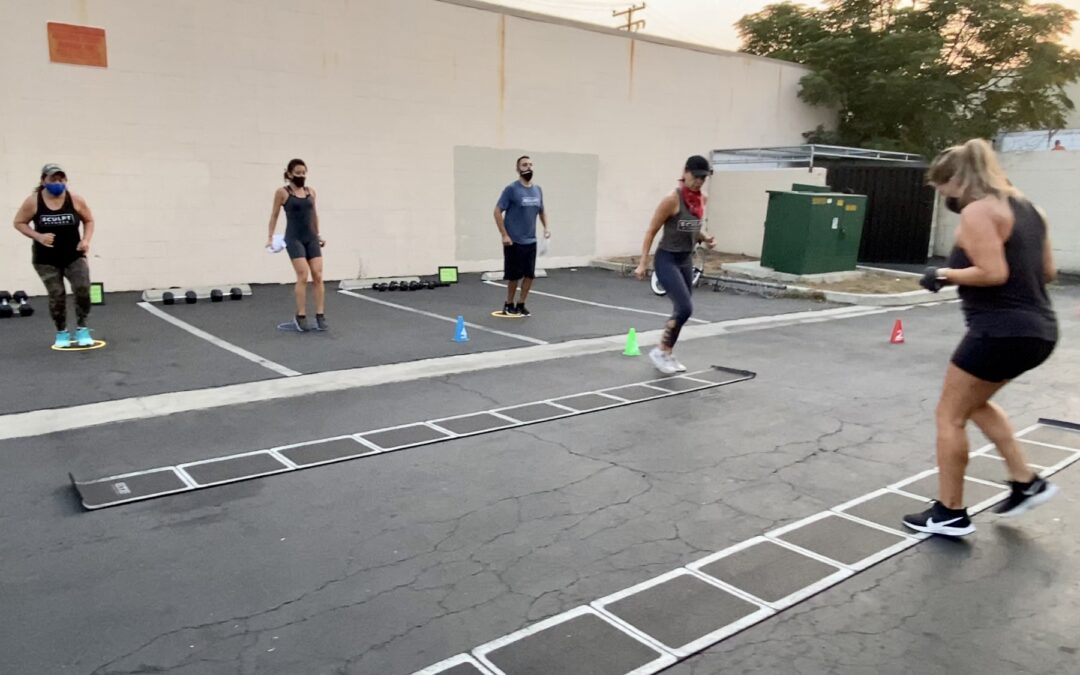
by David Minishian | Dec 2, 2022 | Fitness, Nutrition, Weight Loss
Plateauing is inevitable, but there are steps to beat it.
Remember when you started working out and how your body reacted. First, you had muscle soreness and fatigue, but after a couple months you saw your body composition change.
It’s a great feeling seeing the results.
But eventually the results will stop if you continually put the same amount of physical stress on your body.
Why?
Your body “gets used to it.”
When you feel you are not getting the best results from your workout, or you don’t see the numbers change in the direction you want them to — follow the guidelines below.
4 Steps to Overcome A Weight Loss Plateau
These suggestions will help you overcome the plateau and see more results:
- Add more daily physical activity
- Pay attention to your eating habits
- Progress your strength training routine
- Work with a coach to evaluate the next best steps
These are the basics. Let’s consider why.
1. Incorporating more movement will increase your caloric deficit. The bigger the deficit the more weight you’ll lose. Little things like taking walking breaks, parking further away from the entrance while running errands, or taking the stairs adds up. Look for the simple ways to move.
2. Overeating is the most common reason to plateau. As you lose weight, your Basal Metabolic Rate will decrease. This is the number of calories your body requires to live and breathe. This happens because you’re losing weight. This weight required calories. To account for this and stay in a caloric deficit, you need to gradually decrease the number of calories you eat. This may require paying closer attention to what and how much you eat.
3. By progressively increasing the difficulty of your workout routine, you are telling your body to adapt and change to overcome the new challenge. There are a couple ways to do this. You can lift heavier, do more repetitions, add an extra set, increase the exercise range of motion, or even add an extra workout to your week. These progressive changes will help you build more muscle and reduce your body fat percentage. Since these change also take more work and all work uses calories, you’ll increase your caloric deficit and lose more weight.
4. There may be nuanced reasons you aren’t losing weight. Sometimes these are reasons you aren’t seeing and others times you recognize them but are struggling to overcome them. If this is you, working with a professional may prove to be beneficial. Working with a coach will provide the accountability, support and guidance you need to start taking the right actions to reach your goals.
When you plateau, do not get discouraged. It happens to everyone!
Plateauing is your body’s way of saying I’m ready to take on harder challenges. There are many changes you can make to overcome a plateau and surpass the goals you set for yourself.
Make the right changes and results are bound to happen.
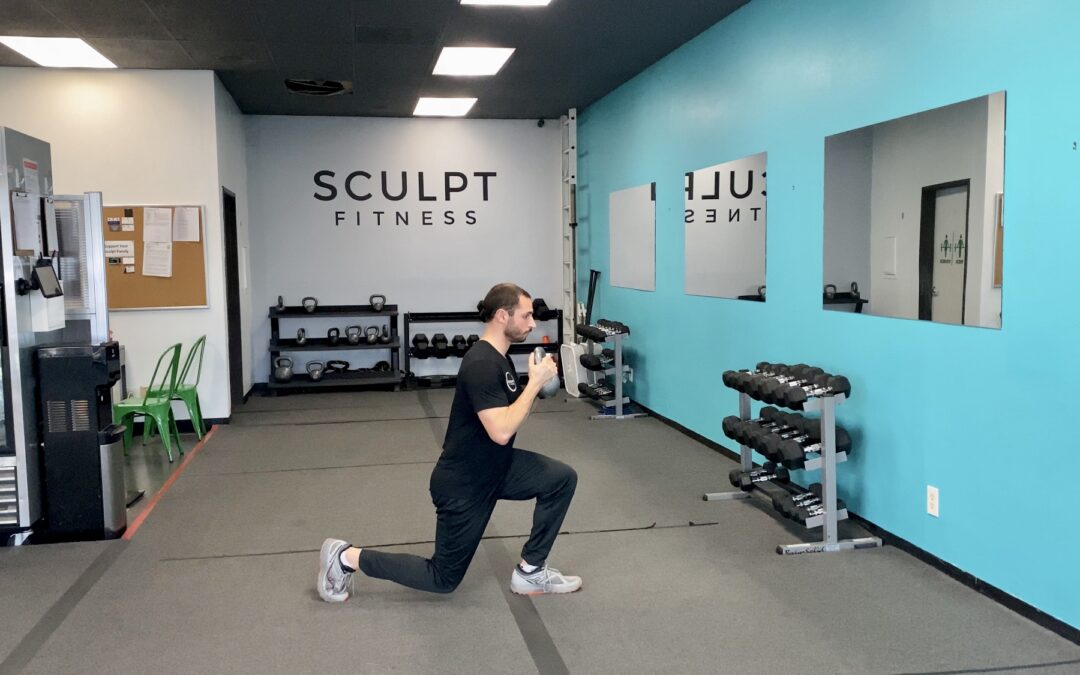
by David Minishian | Nov 30, 2022 | Fitness, Legacy, Nutrition
You have probably heard that “You need to be in a calorie deficit to lose weight.”
It’s true.
You can’t lose weight without consuming less calories than you burn.
However, I’m sure you don’t want to “lose weight”…you want to lose fat specifically.
To target fat loss, these are 2 important principles to follow.
- Be in a caloric deficit
- Focus on building muscle
But how do you put these principles into practice to maximize fat loss?
Caloric Deficit
First, reach a caloric deficit by decreasing your caloric intake and increasing your caloric output.
You’ll want to focus on decreasing your caloric intake with these 3 main concepts:
- Portion control
- Practicing nutritional balance
- Implementing meal timing strategies
To increase your caloric output, workout 3-4 days a week for 45 minutes starting out.
You can gradually increase this to 4-5 days a week, but don’t try to increase your exercise routine to outwork poor nutritional decision.
…it never works long term.
By following Principle 1 – Be in a caloric deficit, you will lose weight. However, you don’t want to lose just any weight, you want to lose fat specifically. This is why it is also important to follow Principle 2 – Focus on building muscle.
Building Muscle
To build muscle, eat sufficient protein and consistently follow a strength training routine that is sustainable for you.
Without enough protein, you won’t optimize fat loss and instead lose more lean muscle mass in a caloric deficit.
With enough protein and a regular strength training routine, you will build or maintain muscle mass so the weight lost in a caloric deficit is fat, not muscle.
When you follow both principles together, you optimize fat loss.
Here is what one of our Small Group Members accomplished in 3 months following this advice:
- -7.3% in Body Fat
- -11.7lbs of Fat
- +5.6lbs of Lean Body Mass
- +3.7lbs of Muscle Mass
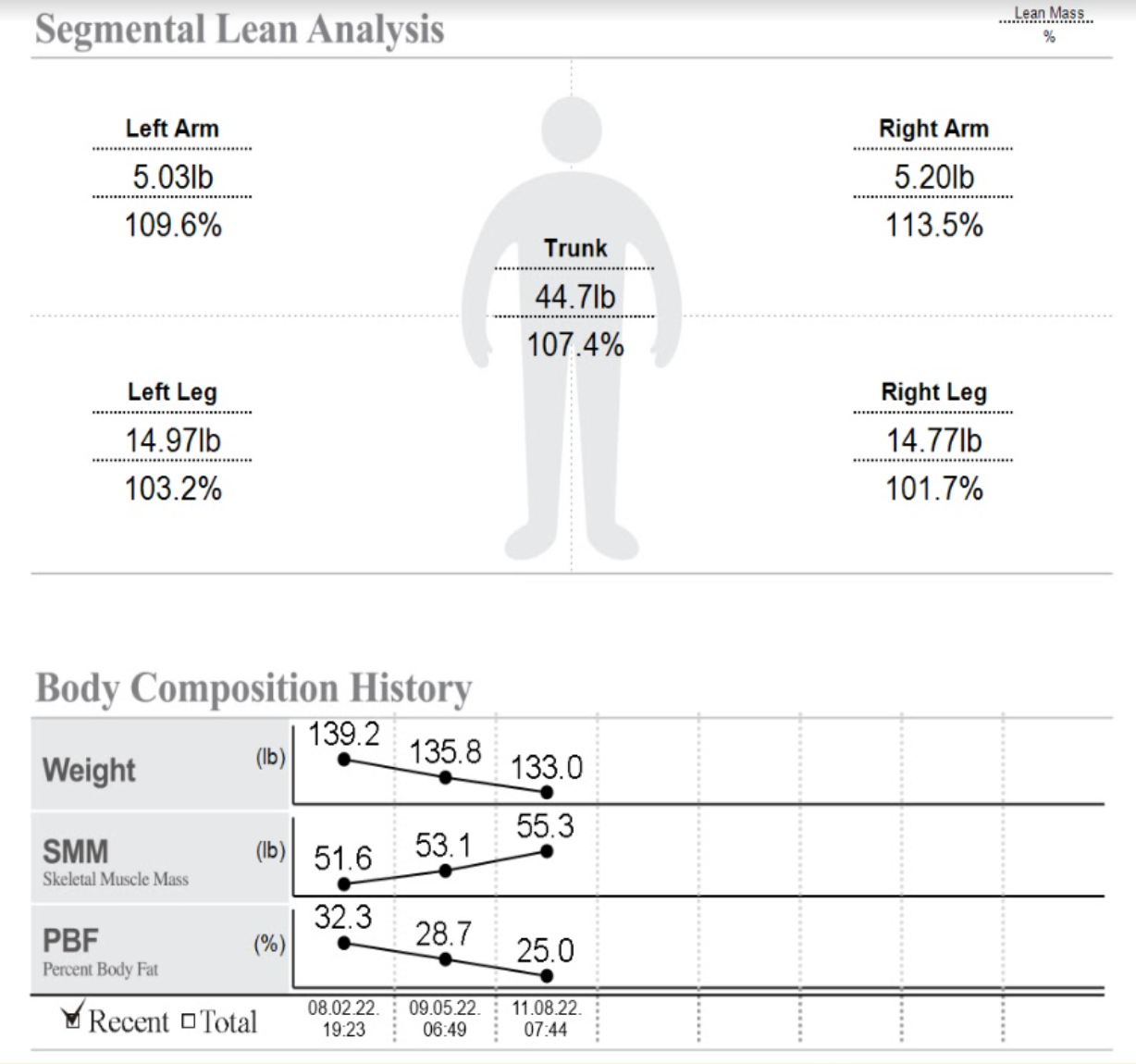
Calculators
The BMR Calculator will tell you how many calories you need to eat to maintain, lose or gain weight.
The Protein Calculator will tell you how grams of protein you need to preserve your muscle and lean body mass while in a caloric deficit. Start with the lower number and gradually increase it if desired results are not achieved.
Ready to build the body you want with a sustainable lifestyle?
Fitness and Nutrition Coach
David is the owner and head coach at Sculpt Fitness in Long Beach, CA. He leads the mission at Sculpt to educate, equip, and empower the local community to make the best decisions for their health. For over 10 years he has coached exercise and nutrition, helping clients create sustainable lifestyle to build the body they want. When he's not training, coaching or cooking, David is on an adventure with his wife and kids or teeing up his next shot on a golf course.
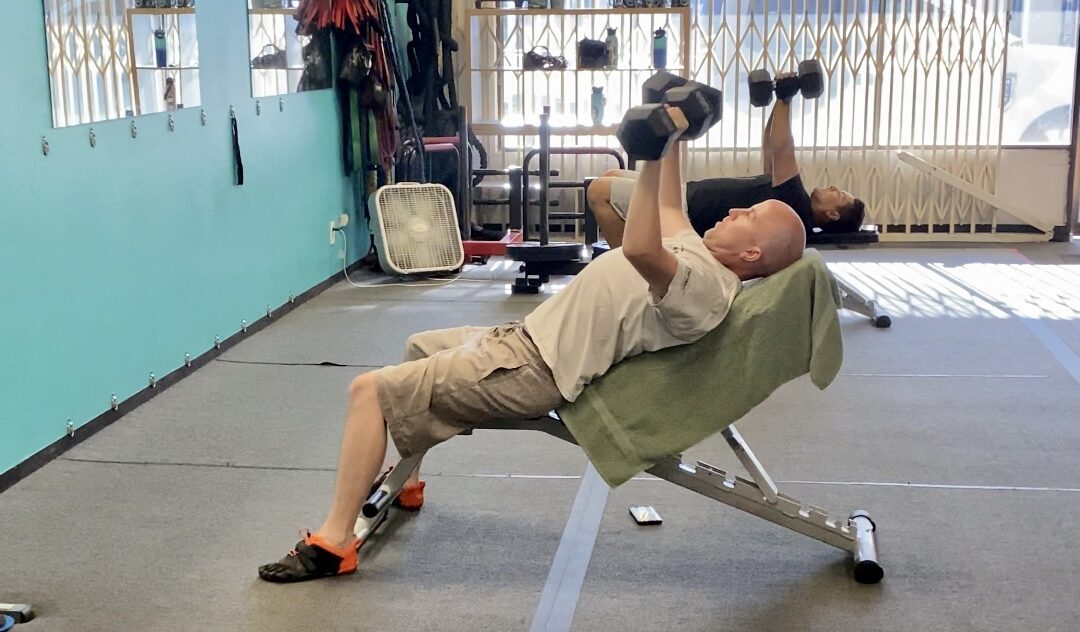
by David Minishian | Nov 15, 2022 | Fitness
Resistance training is more than using proper form to lift weights.
Once you master these basics, there is a deeper level of expertise that promotes more progress.
This next stage of training focuses on the muscular contractions in each exercise.
A muscular contraction, whether it be a bicep curl, chest press or squat, has three stages during the movement, but it is only when you learn to control each one that you get the most out of your workouts.
Muscular Contraction Types
The three stages of a muscular contraction are concentric, eccentric and isometric.
- Concentric contractions pertain to shortening the muscle while increasing the tension, like the upward motion in a bicep curl.
- Eccentric contractions pertain to the lengthening of the muscle as the resistance becomes greater than the force the muscle is producing; releasing your bicep curl and guiding the weight down to starting position.
- Isometric contractions have no visual movement but are the pause between concentric and eccentric. For example, the pause at the top of your bicep curl maintains the static contraction of your muscle without any visible movement.
By using these three contractions strategically, you can repeat a previous workout but afterwards feel completely different and get better results.
Contraction Examples
Here are some examples of how I use these contractions in my training:
For concentric contractions, often the main focus when lifting weights, I speed up or slow down the tempo of the movement or change the range of motion. By manipulating these factors, I’m able to work on increasing strength throughout the whole muscle’s range of motion.
To target the eccentric contractions, I won’t allow the weight to “fall” back to the starting position in a bicep curl with limp arms and no control, but slowly lower the weight fighting against gravity from pulling the weight down. By keeping muscle under constant tension while extending the muscle, I’m building stronger more resilient muscle tissue.
On a heavy leg day, after doing my deadlifts and back squats, I’ll hold my body position at the bottom of a lunge for 30 seconds on each side. This is an isometric lunge, where by lowering my back knee and staying in that static position, I’m working on improving my control and balance.
Exercises are done correctly when you control the weight and maintain good form. However, you can challenge yourself beyond the basics by focusing on a certain contraction.
Applying Advanced Contraction Techniques
Want to take your training to the next level?
Identify the concentric, eccentric and isometric contractions of an exercise, then manipulate the tempo of any of the three contractions and see how it feels!
Using advanced techniques like this can help you make more progress and overcome plateaus specific to you.
Whether you need help developing the basics like proper form and exercise consistency or want to implement more advanced lifting techniques, we’re here to give you the guidance you need 💪
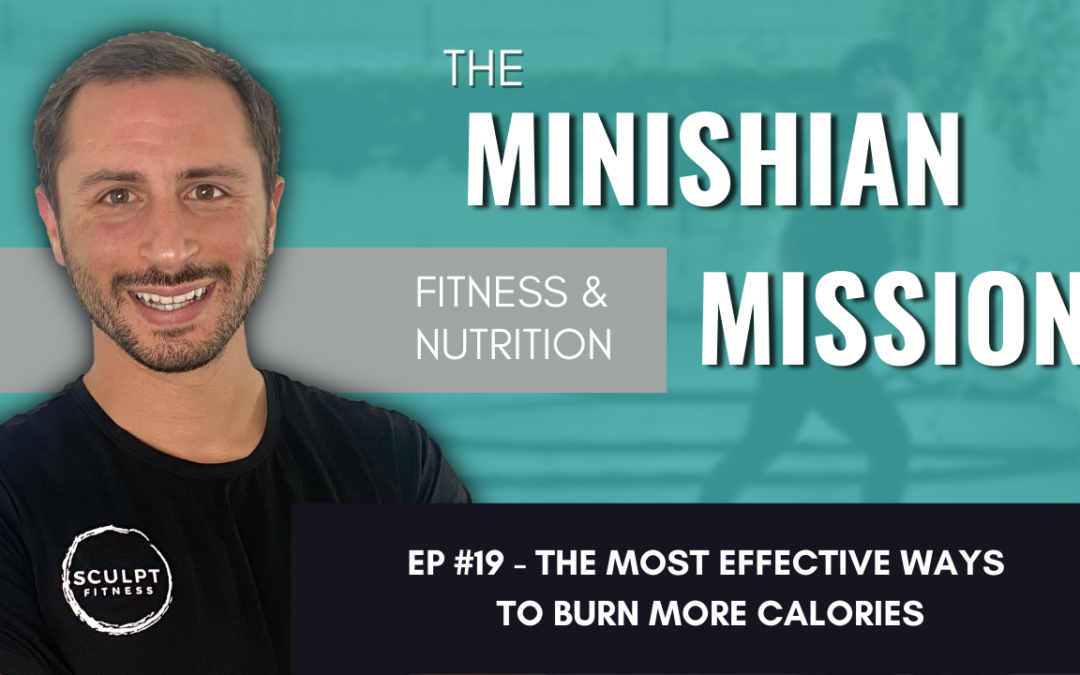
by David Minishian | Nov 16, 2021 | Fitness, Nutrition, Podcasts
To burn more calories, do the things that would change your body composition.
The Most Effective Ways To Burn More Calories
The most effective ways to burn more calories are going to come from the activities that cause your body composition to change. That does not mean an endless amount of cardio! That can, and most often does, get in the way of building muscle and losing weight in a sustainable manner anyways.
In This Episode
- [00:26] – Strength Training
- [01:14] – Staggering Workouts
- [02:20] – Moving More
- [03:02] – Increase Intensity
- [03:46] – High Protein Diet
When you start Strength Training, you tell your body you want a composition change. Your body begins to burn fat and put on lean muscle mass, which causes you to burn more calories through the day, further helping your body composition change. — David Minishian
Resistance Based Strength Training
When you are strength training you are changing your body composition. You increase the amount of lean muscle mass on your body and that naturally causes you to burn more calories throughout the day on top of the calories you burn actually exercising. An important thing to note: after a while of doing the same or similar workouts your body adapts and it becomes easier, meaning that you won’t be getting the same benefits you once were. You begin to burn less calories and gain strength slower, that means it’s time to up the intensity.
Stagger Your Workouts
Staggering your workouts help you get all the benefits of your workouts and recovery periods. It is better to spread your workouts evenly through out the week so you can take advantage of the effects of consistency. Your body burns more calories than normal up to 72 hours after a workout, so you want don’t want to go long periods of time not working out and going stagnant. If you are working out 3 times a week, you would gain more from your efforts if you have them spaced out, something like Monday, Wednesday, Friday instead of clumping them together like Monday, Tuesday, Wednesday. This also applies to your activity outside of the workouts, moving more in general will promote more calorie burn through physically moving more and staying busy so that there is less “accidental” eating.
High Protein Diet
Those who focus on a high protein diet actullay burn more of the calories they consume then someone who doesnt consume as much protein. Out of the 3 Macro Nutrients, protein actually requires the most energy, the most calories, to break down and digest. So outside of protein rebuilding the damage to your muscles to get stronger and burn more calories in a day anyways, it also helps you burn even more calories through digestion.
Ready to build the body you want with a sustainable lifestyle?
Fitness and Nutrition Coach
David is the owner and head coach at Sculpt Fitness in Long Beach, CA. He leads the mission at Sculpt to educate, equip, and empower the local community to make the best decisions for their health. For over 10 years he has coached exercise and nutrition, helping clients create sustainable lifestyle to build the body they want. When he's not training, coaching or cooking, David is on an adventure with his wife and kids or teeing up his next shot on a golf course.




